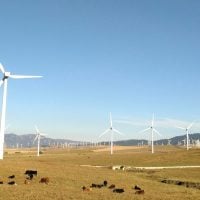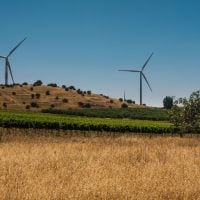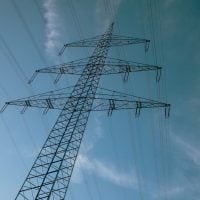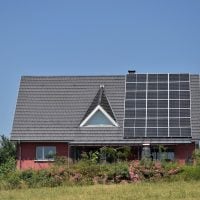Energy efficiency has emerged as a critical focus in the Asia-Pacific region, where rapid economic growth and urbanization have led to increased energy consumption and environmental challenges. As countries in this region strive to balance development with sustainability, energy efficiency offers a pathway to reduce energy demand, lower greenhouse gas emissions, and enhance energy security. The Asia-Pacific is home to diverse economies, from developed nations like Japan and Australia to developing countries such as Vietnam and Bangladesh.
Each of these nations faces unique challenges and opportunities in implementing energy-efficient practices. The significance of energy efficiency extends beyond mere cost savings; it plays a vital role in addressing climate change and promoting sustainable development. By optimizing energy use in industries, buildings, and transportation, countries can significantly reduce their carbon footprints while fostering economic growth.
The International Energy Agency (IEA) has highlighted that improving energy efficiency could lead to a reduction of up to 40% in global energy demand by 2040. This potential makes it imperative for stakeholders, including governments, businesses, and non-governmental organizations (NGOs), to collaborate on initiatives that promote energy-efficient technologies and practices across the region. Are You Working on Solar Innovation or Clean Energy Access? Join us to receive updates.
Key Takeaways
- Energy efficiency is crucial for sustainable development in the Asia-Pacific region.
- Donors play a significant role in promoting and supporting energy efficiency initiatives.
- Top donors in the Asia-Pacific region include international organizations, governments, and private foundations.
- Donor initiatives and programs focus on capacity building, technology transfer, and policy support for energy efficiency.
- Donor support has a significant impact on the success of energy efficiency projects in the region.
The Importance of Donors in Promoting Energy Efficiency
Donors play a pivotal role in advancing energy efficiency initiatives in the Asia-Pacific region. Their financial support, technical expertise, and strategic guidance are essential for implementing projects that may otherwise lack the necessary resources. Many countries in this region face budget constraints and limited access to advanced technologies, making donor assistance crucial for scaling up energy efficiency efforts.
By providing funding and resources, donors can help bridge the gap between ambitious energy efficiency goals and the practical means to achieve them. Moreover, donors often bring valuable experience from previous projects, enabling them to share best practices and lessons learned with local organizations. This knowledge transfer is vital for building local capacity and ensuring the sustainability of energy efficiency initiatives.
By fostering partnerships between donors and local stakeholders, these collaborations can lead to innovative solutions tailored to the specific needs of each country or community. Ultimately, donor involvement not only enhances the effectiveness of energy efficiency projects but also contributes to broader socio-economic development goals.
Overview of Top Donors in the Asia-Pacific Region

Several key donors have emerged as leaders in promoting energy efficiency across the Asia-Pacific region. Multilateral organizations such as the Asian Development Bank (ADB) and the World Bank have been instrumental in financing large-scale energy efficiency projects. These institutions provide not only funding but also technical assistance and policy advice to help countries develop robust energy efficiency frameworks.
Their involvement often catalyzes additional investments from private sector actors, amplifying the impact of donor support. Bilateral aid agencies also play a significant role in this landscape. For instance, the United States Agency for International Development (USAID) has launched various initiatives aimed at enhancing energy efficiency in countries like India and Indonesia.
Similarly, the German development agency GIZ has been active in promoting energy-efficient technologies and practices throughout Southeast Asia. These donors often collaborate with local governments and NGOs to implement targeted programs that address specific energy challenges faced by communities.
Donor Initiatives and Programs for Energy Efficiency
Donor initiatives aimed at promoting energy efficiency are diverse and multifaceted, reflecting the varying needs of countries within the Asia-Pacific region. For example, ADB’s Energy Efficiency Initiative focuses on financing projects that improve energy performance in buildings, industries, and transport systems. This initiative not only provides funding but also emphasizes capacity building through training programs for local stakeholders.
In addition to financial support, many donors implement awareness campaigns to educate communities about the benefits of energy efficiency. USAID’s “Clean Power Asia” program is an excellent example of this approach, as it works to promote clean energy solutions while raising awareness about energy-saving practices among businesses and consumers. By combining financial resources with educational efforts, donors can create a comprehensive strategy that fosters a culture of energy efficiency within communities.
Impact of Donor Support on Energy Efficiency Projects
The impact of donor support on energy efficiency projects can be profound, often leading to significant improvements in energy consumption patterns and environmental outcomes. For instance, projects funded by ADB have resulted in substantial reductions in energy use across various sectors, demonstrating how targeted investments can yield measurable results. In many cases, these projects have also led to job creation and economic growth, showcasing the broader benefits of energy efficiency beyond environmental sustainability.
Moreover, donor support often catalyzes further investment from both public and private sectors. When donors invest in pilot projects or innovative technologies, they can demonstrate the viability of energy-efficient solutions, encouraging additional stakeholders to participate. This ripple effect can lead to a more extensive adoption of energy-efficient practices across entire industries or regions, amplifying the initial impact of donor-funded initiatives.
Case Studies of Successful Energy Efficiency Projects Supported by Donors
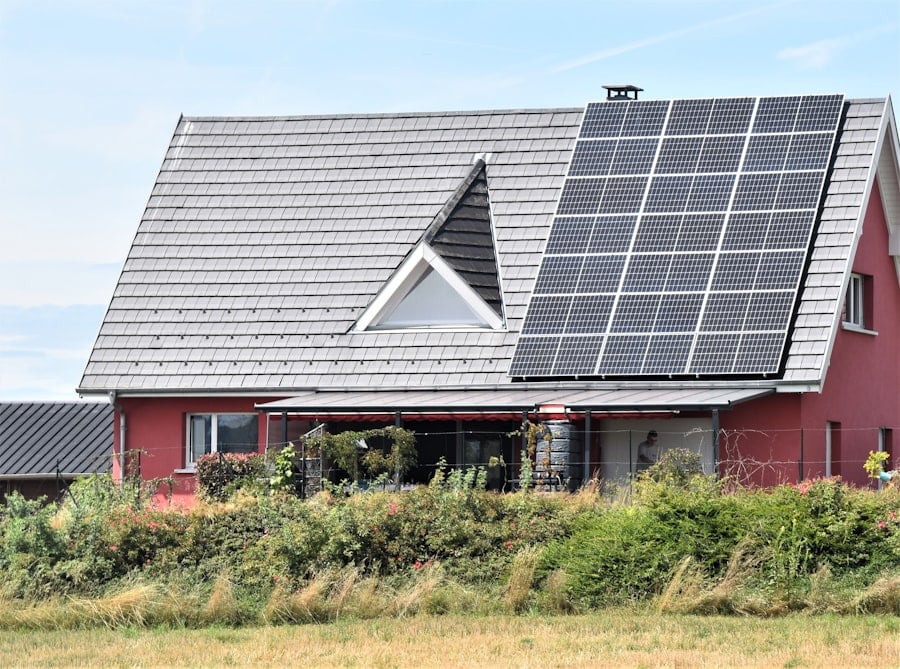
Several successful case studies illustrate the transformative potential of donor-supported energy efficiency projects in the Asia-Pacific region. One notable example is the “Green Building” initiative in Singapore, which received funding from various international donors. This project aimed to retrofit existing buildings with energy-efficient technologies such as LED lighting and advanced HVAC systems.
As a result, participating buildings reported a reduction in energy consumption by up to 30%, significantly lowering operational costs while contributing to Singapore’s sustainability goals. Another compelling case is found in India, where USAID’s “Building Energy Efficiency Project” has successfully implemented energy-efficient measures in commercial buildings across several cities. By providing technical assistance and financial incentives for retrofitting projects, this initiative has led to substantial reductions in electricity consumption and greenhouse gas emissions.
The success of these projects not only demonstrates the effectiveness of donor support but also serves as a model for other countries seeking to enhance their energy efficiency efforts.
Challenges and Opportunities in Promoting Energy Efficiency in Asia-Pacific
Despite the progress made in promoting energy efficiency across the Asia-Pacific region, several challenges persist that hinder further advancements. One significant barrier is the lack of awareness and understanding of energy-efficient practices among consumers and businesses. Many stakeholders remain unaware of the potential cost savings and environmental benefits associated with adopting energy-efficient technologies.
This knowledge gap can impede the widespread adoption of such practices. Additionally, regulatory frameworks in some countries may not adequately support or incentivize energy efficiency initiatives. Inconsistent policies or lack of enforcement can create uncertainty for investors and hinder progress toward achieving national energy efficiency targets.
However, these challenges also present opportunities for donors and local organizations to collaborate on awareness campaigns and advocacy efforts aimed at improving regulatory environments.
Collaboration and Partnerships between Donors and Local Organizations
Collaboration between donors and local organizations is essential for maximizing the impact of energy efficiency initiatives in the Asia-Pacific region. Local organizations possess valuable insights into community needs and challenges, enabling them to tailor solutions effectively. By partnering with these organizations, donors can ensure that their investments align with local priorities and cultural contexts.
Successful collaborations often involve capacity-building efforts that empower local organizations to take ownership of energy efficiency projects. For instance, training programs funded by donors can equip local NGOs with the skills needed to implement and manage energy-efficient initiatives independently. This approach not only enhances project sustainability but also fosters a sense of community engagement and ownership over energy efficiency efforts.
Future Trends and Innovations in Donor Support for Energy Efficiency
As the landscape of energy efficiency continues to evolve, several trends are emerging that will shape donor support in the Asia-Pacific region. One notable trend is the increasing emphasis on digital technologies and data analytics to optimize energy use. Donors are beginning to invest in smart grid technologies, IoT devices, and data-driven solutions that enable real-time monitoring and management of energy consumption.
Additionally, there is a growing recognition of the importance of integrating gender considerations into energy efficiency initiatives. Donors are increasingly focusing on empowering women as key stakeholders in energy projects, recognizing their potential to drive change within communities. By promoting gender equality in access to clean energy solutions, donors can enhance the overall effectiveness of their programs while contributing to broader social equity goals.
The Role of Government Policies in Supporting Energy Efficiency Efforts
Government policies play a crucial role in creating an enabling environment for energy efficiency initiatives within the Asia-Pacific region. Supportive policies can incentivize investments in energy-efficient technologies while establishing clear targets for reducing energy consumption at national levels. Governments can implement regulations that mandate minimum energy performance standards for appliances and buildings or provide financial incentives for businesses adopting energy-efficient practices.
Moreover, government leadership is essential for fostering collaboration among stakeholders involved in promoting energy efficiency. By engaging with donors, local organizations, and private sector actors, governments can create comprehensive strategies that align efforts toward common goals. This collaborative approach not only enhances project effectiveness but also ensures that resources are utilized efficiently across various sectors.
The Way Forward for Energy Efficiency in Asia-Pacific
The path forward for enhancing energy efficiency in the Asia-Pacific region requires a concerted effort from all stakeholders involved—donors, governments, local organizations, businesses, and communities alike. By leveraging donor support effectively while fostering collaboration among diverse actors, countries can unlock significant potential for reducing energy consumption and mitigating climate change impacts. As we look ahead, it is essential to continue investing in innovative solutions that address both current challenges and emerging opportunities within the realm of energy efficiency.
By prioritizing education, capacity building, and supportive policies, we can create a sustainable future where efficient use of resources becomes ingrained within societies across the Asia-Pacific region. The journey toward greater energy efficiency is not just an environmental imperative; it is an opportunity for economic growth, social equity, and improved quality of life for all citizens.

